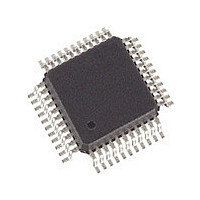SLXT332QE.G2 Cortina Systems Inc, SLXT332QE.G2 Datasheet - Page 18

SLXT332QE.G2
Manufacturer Part Number
SLXT332QE.G2
Description
Manufacturer
Cortina Systems Inc
Datasheet
1.SLXT332QE.G2.pdf
(45 pages)
Specifications of SLXT332QE.G2
Operating Supply Voltage (typ)
5V
Screening Level
Industrial
Mounting
Surface Mount
Operating Supply Voltage (min)
4.75V
Operating Supply Voltage (max)
5.25V
Operating Temperature (min)
-40C
Operating Temperature (max)
85C
Lead Free Status / RoHS Status
Not Compliant
Available stocks
Company
Part Number
Manufacturer
Quantity
Price
Company:
Part Number:
SLXT332QE.G2
Manufacturer:
ICS
Quantity:
427
LXT332
Datasheet
249075, Revision 2.0
26 June 2007
4.2
Figure 4
4.2.1
Cortina Systems
Depending on the options selected, recovered clock and data signals may be routed
through the jitter attenuator, through the B8ZS/HDB3 decoder, and may be output to the
framer as either bipolar or unipolar data. In unipolar data I/O mode, the LXT332 reports
bipolar violations via an output for one RCLK period on the respective BPV pin.
Transmitter
The two transmitters in the LXT332 are identical. The following paragraphs describe the
operation of a single transmitter.
Transmit data from the framer is clocked serially into the device at TPOS/TNEG in the
bipolar mode or at TDATA in the unipolar mode. The transmit clock (TCLK) supplies the
input synchronization. The transmitter samples TPOS/TNEG or TDATA inputs on the
falling edge of TCLK. If TCLK is not supplied, the transmitter remains powered down and
the TTIP/TRING outputs are held in a high-Z state, except during RLOOP, DLOOP, QRSS
or TAOS modes. A separate power supply (TVCC0 or TVCC1) supplies each output
driver. Current limiters on the output drivers provide short circuit protection. Refer to the
Test Specifications Section for MCLK and TCLK timing characteristics. The LXT332
transmits data as a 50% Alternate Mark Inversion (AMI) line code as shown in
Enabling the zero suppression encoders/decoders overrides the default and the
transmission complies with the selected encoding scheme.
50% AMI Coding
Zero suppression is available only in Unipolar mode. The two zero-suppression types are
B8ZS, used in T1 environments, and HDB3, used in E1 environments. The scheme
selected depends on whether the application is T1 or E1.
Bipolar Violation Insertions
In the Host mode with unipolar data I/O selected, a Bipolar Violation (BPV) insert function
is available. When the VCQE pin is held High, VCQ0 and VCQ1 pins control bipolar
violation insertion for ports 0 and 1, respectively. TDATA and VCQ are both sampled on
the falling edge of TCLK. If VCQ is High, the next available mark is transmitted as a BPV,
except as follows:
A Low-to-High transition on VCQ is required for each subsequent BPV insertion.
®
1. B8ZS and HDB3 zero suppression is not violated.
2. If Local Loopback (LLOOP) and Transmit All Ones (TAOS) are both active, the BPV is
3. During Remote Loopback, BPV insertion is disabled.
LXT332 Dual T1/E1 Line Interface Unit with Crystal-less Jitter Attenuation
looped back to RDATA but the line driver transmits All Ones (no violations).
TRING
TTIP
Bit Cell
1
0
1
4.2 Transmitter
Figure
Page 18
4.












